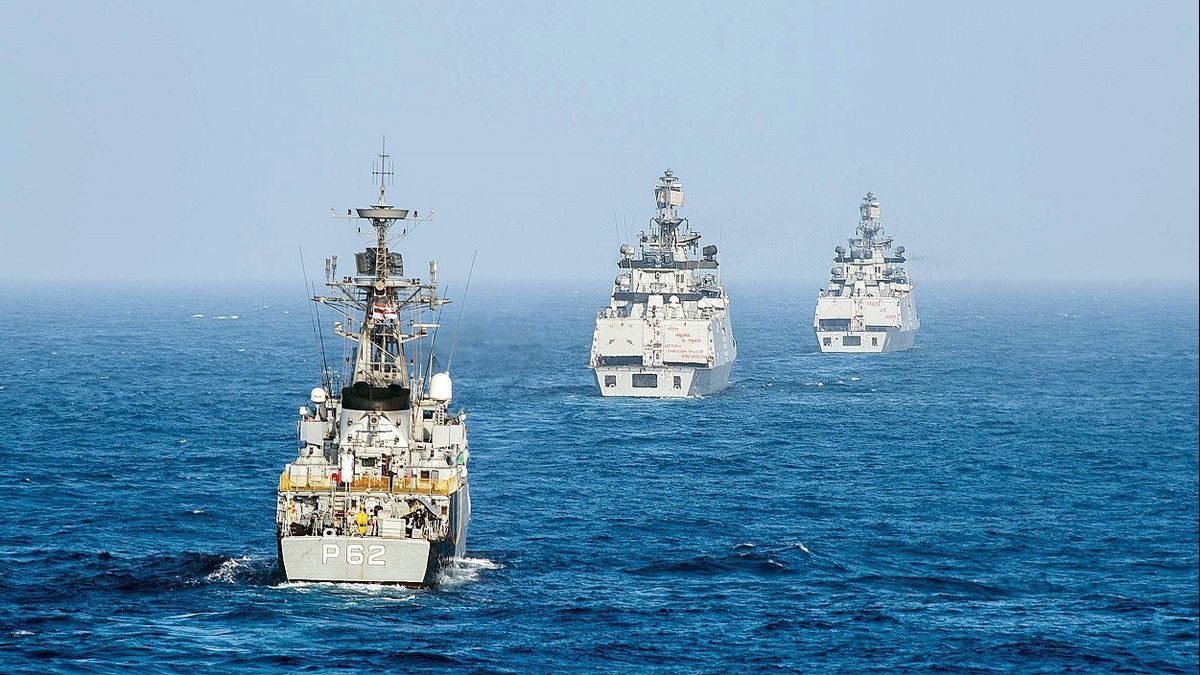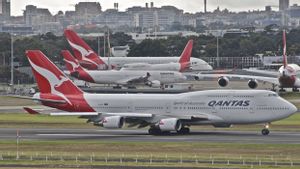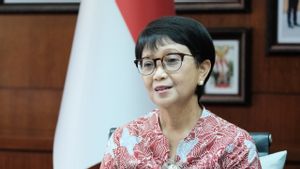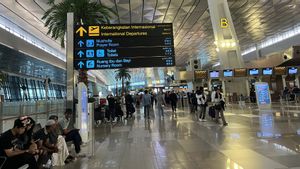JAKARTA - India's Ministry of Defense announced the dispatch of a task force to the South China Sea for two months, including participating in a four-nation joint exercise with the United States, Japan, and Australia.
Unmitigated, this task force will contain four warships at once consisting of guided-missile destroyers, guided-missile frigates, anti-submarine corvettes, and guided-missile corvettes.
In its announcement, the Indian Ministry of Defense said the ship would depart from India earlier this month, without specifying the exact date of departure of the task force, said it would participate in a series of bilateral exercises, in addition to the 2021 Malabar Naval Exercise with the United States, Japan, and Australia.
In the bilateral exercise, Indian warships will work with naval units from South China Sea littoral countries, including Singapore, Vietnam, Indonesia, and the Philippines.
"This maritime initiative enhances the synergy and coordination between the Indian Navy and friendly countries, based on shared maritime interests and commitment to Freedom of Navigation at sea", explained the Indian Ministry of Defense citing CNN Tuesday, August 3.

The delivery of this Indian warship will make the South China Sea even more congested with warships. Most recently, Germany will send a Bayern frigate (F217) to this region. Last week, the fleet led by the British aircraft carrier HMS Queen Elizabeth was also present in this area.
Later, two warships and one British Marine anti-terror unit are planned to be stationed in the South China Sea area. Meanwhile, the warships of the United States and China have been pacing in this 1.3 million square mile sea.
Beijing claims almost all of the South China Sea as its sovereign territory, turning many of the coral reefs and obscure sandbars along the waterway into man-made islands heavily fortified with missiles, runways, and weapons systems.
Separately, a researcher from the S. Rajaratnam School of International Studies in Singapore and naval observer Colling Koh said the presence of the Indian warship was part of an effort to show New Delhi's existence in the South China Sea.
However, Koh does not expect Indian ships to become confrontational, or conduct freedom of navigation operations near Chinese-claimed islands in the South China Sea.

"The presence of ships in the South China Sea alone, even if beyond the 12 (nautical mile) limit of any Chinese-occupied feature, will be sufficient to fulfill New Delhi's strategic objectives signaling its intention to remain engaged in the Western Pacific", Koh explained.
"The deployment of Indian Navy vessels seeks to underscore the operational range, peaceful presence, and solidarity with friendly countries to ensure good order in the maritime domain and to strengthen the existing ties between India and the Indo-Pacific countries", he said.
SEE ALSO:
To note, the carrier fleet HMS Queen Elizabeth, which was sent by Britain to the South China Sea, became the largest fleet to pass through this region in recent years, for a long mission across the Pacific.
The fleet will include two destroyers, two anti-submarine frigates, one submarine, and two supply ships for logistics. Not only that, a guided-missile destroyer of the United States Navy and a Dutch frigate will be assigned to air defense.
Airpower in the group will be concentrated on the UK's RAF F-35B and US Marine Corps F-35B stealth fighters, all of which will fly from the deck of the aircraft carrier HMS Queen Elizabeth. This combined air power will be the largest in a British warship group, since HMS Hermes in 1983. It will also be the largest air group collaboration of fifth-generation fighter aircraft in the world.
The English, Chinese, Japanese, Arabic, and French versions are automatically generated by the AI. So there may still be inaccuracies in translating, please always see Indonesian as our main language. (system supported by DigitalSiber.id)


















